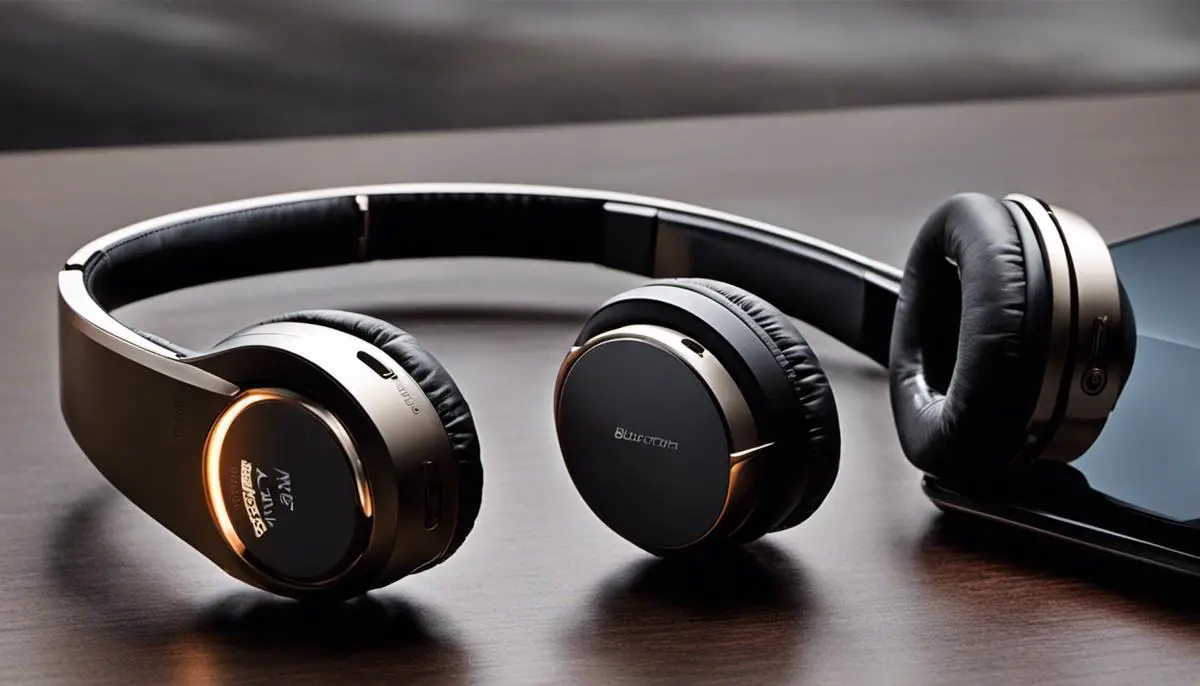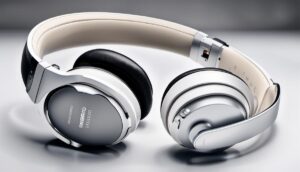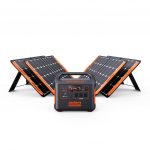In the innovative landscape of audio technology, wireless headphones have emerged as a pinnacle of convenience and quality. Surpassing the constraints of wires, they have managed to grant freedom to music lovers and professionals without compromising on audio quality.
This write-up is strategically designed to educate you about the iconic elements of wireless headphones – the transmitter and receiver, whilst also shedding light on their underlying technology – Bluetooth, RF, and more. Moreover, it will guide you through the potential advantages and certain limitations of choosing wireless headphones over their traditional wired competitors.
Table of Contents
Understanding Wireless Headphones
Understanding Wireless Headphones: Basic Concept and Functioning
Wireless headphones work by receiving signals from a transmitter (the source device like a smartphone, TV, or computer). These are small electronic devices that connect with the sound source and later send the audio through a wireless signal. This audio signal is then picked up by the receiver within the headphones and converted back into sound.
There are typically three types of technology leveraged in wireless headphones: Bluetooth, Radio Frequency (RF), and Infrared (IR). Bluetooth technology is the leading and most common wireless technology used by headphones. It entails pairing the headphones with the audio source for an effective transfer of sound. Its operational range is commonly about 100 meters.
RF is a wireless communication method that uses radio signals to send and receive data. Wireless headphones using RF can work up to 100 feet away from the transmitter, offering a stronger signal penetration through walls. However, they might suffer from interference from other devices that use the same frequency.
IR wireless headphones work almost like your TV remote. They use light waves to transmit signals, meaning that they require a clear line of sight to operate properly. These headphones are ideal for static use cases, such as watching TV, where the user is not expected to move around a lot.
Advantages of Wireless Headphones
Compared to conventional wired headphones, wireless options offer numerous advantages. Freedom of movement is a considerable benefit. Without wires, users are no longer tethered to their devices, giving enhanced mobility. This is particularly useful for people who work out, run, or need to multitask.
Wireless headphones also provide a clutter-free experience. Tangled wires can be inconvenient and, in some cases, even damaging to the headphones. Additionally, as many modern devices, such as smartphones, are removing headphone jacks, wireless headphones are necessary for compatibility.
Limitations of Wireless Headphones
Despite their many advantages, wireless headphones have certain limitations too. One significant one is the need for batteries or charging. Depending on the type of headphones, you may need to replace batteries or regularly charge the device.
Also, in some cases, depending on the technology used, you might experience sound delays, a phenomenon known as latency. For instance, watching a video with Bluetooth headphones can sometimes result in the audio and video being out of sync. Moreover, since wireless signals can be interfered with, sound quality may sometimes be compromised.
Obtaining an in-depth understanding of wireless headphones is essential for buyers to make informed decisions. It’s imperative to note that while there can be general advantages and disadvantages, the actual performance can differ significantly across various brands and models. Thus, consulting customer reviews and professional evaluations before making a purchase is a sound practice.

Photo by echaparro on Unsplash
Wireless Headphone Transmitter: All You need to know
An Insight into the Role of Wireless Headphone Transmitter
One of the key elements of wireless headphones is the wireless headphone transmitter, essentially tasked to seamlessly transmit the audio signal from its source to the headphones without any wire. Often housed in the headphone base station or a separate module, the transmitter converts the audio signal into a radio or infrared signal which is then picked up by the headphones.
Functioning of the Wireless Headphone Transmitter
The wireless headphone transmitter operates by receiving audio signals from the source device, such as a smartphone, a TV, or a computer. These signals, which are traditionally sent through wires, are converted to radio or infrared signals by the transmitter. In the case of Bluetooth headphones, the device itself typically houses the transmitter. The converted signals are then sent through the air to the receiver in the wireless headphones.
The receiver in the headphones then decodes the radio or infrared signals back into audio signals. These decoded signals are sent to the headphone speakers, which ultimately produce the sound you hear. This wireless transmission process enables the listener to receive high-quality audio without the hindrance of wires.
Various Kinds of Wireless Transmitter Technologies
Wireless headphone transmitters utilize varying technologies, primarily Bluetooth, Radio Frequency (RF), and Infrared (IR) technology.
Bluetooth technology allows wireless headphone transmitters to send signals using short-wavelength UHF radio waves. Bluetooth headphones are popular because they deliver good sound quality up to 30 feet away from the source, sufficient for most everyday surroundings.
RF headphones operate via the transmitter sending radio waves to the receiver. They have an extensive range of up to a few hundred feet, making them a good fit for TV watching or music listening at home.
Infrared technology, while less common, operates by transmitting signals in the form of light waves instead. These headphones require line of sight for operation and may not work effectively if blocked by objects or used across different rooms.
Size and Design of Wireless Headphone Transmitter
The size and design of the wireless headphone transmitter can vary based on the type of wireless headphone. For instance, with dedicated wireless headphones used for home entertainment, the transmitter often comes as a separate base station. This base station is generally stand-alone and acts as both a charging station and a transmitter. The headphone is placed on this station when it needs to be charged or when not in use.
For Bluetooth headphones commonly used with mobile devices, the transmitter is built into the headphone itself. These devices convert and transmit signals within the unit, eliminating the need for an external transmitter.
The Critical Role of a Wireless Headphone Transmitter
A wireless headphone transmitter, although not widely recognized, plays a crucial role in our everyday listening experiences, offering a hassle-free, wire-free audio solution. This nifty device primarily transmits audio signals sans any physical connections, granting users with unparalleled freedom and convenience when listening to their favorite tunes or tuning into important calls, whether they’re on the move, out for a jog, or simply at home.
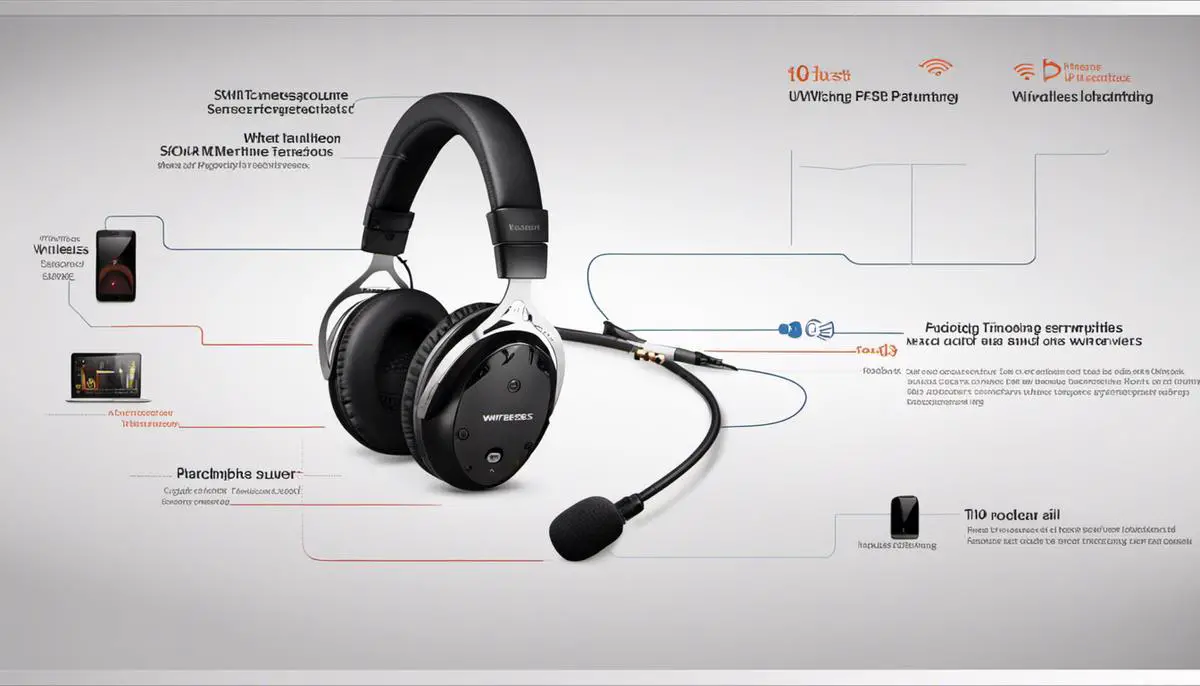
Wireless Headphone Receiver: An In-depth Look
The Indispensable Wireless Headphone Receiver: Making it All Click
Entwined with the functionality of a wireless headphone transmitter is its counterpart – the wireless headphone receiver. This integral component interprets the transmitted signals, converting them back into recognizable sounds that our ears can interpret and appreciate. The receiver is typically housed within the headphone unit making this complex operation possible in a sleek, compact, and lightweight design that comfortably fits over or in your ears.
The Key Role and Function of a Wireless Receiver
The primary responsibility of a receiver is to receive and demodulate the transmitted audio signal. This basically means that it extracts the information carried by the signal and turns it into a format that the headphones can output as sound. This is done through a process known as demodulation, which is a key technique widely used in wireless communications, not just in headphones. Once the demodulated signal is ready, the receiver proceeds to amplify it, so that the listeners get a robust and clear sound reproduction of the original audio file.
Inside the Wireless Headphone Receiver
What happens inside the wireless headphone receiver involves several stages. Firstly, the RF (Radio Frequency) transmission received by the receiver’s antenna is filtered to remove unwanted signals. After that, the remaining RF signal is amplified by an RF amplifier. This makes it strong enough to be processed further. Next, a frequency converter changes the frequency of the signal to a manageable level before an intermediate amplifier boosts this signal. Finally, a demodulator produces the audio signal which the audio amplifier then enhances for you to hear.
Various Types of Wireless Technology
There are several types of wireless receivers based on the types of technology employed. The most common type found in wireless headphones today is Bluetooth, which is a standard for short-range wireless communication between devices. Bluetooth receivers are commonly found in headphones since they pair easily with most modern devices, like smartphones, tablets, and computers.
Other types include Infrared (IR) and Radio Frequency (RF) receivers. IR headphones, although not mechanically affected by walls or ceilings, can’t reach far and require a clear line-of-sight to function effectively, while RF headphones offer more range and can pass through walls, but they might interfere with other RF devices. Lastly, digital wireless headphones are a recent development using digital transmission to deliver superior sound quality.
Another technology used in wireless headphones is True Wireless Stereo (TWS), a technology that allows you to use both left and right ears separately. Some wireless headphones, particularly high-end models, may also use Wi-Fi to provide higher-quality audio and connect with a wider range of devices.
The Intricate Design of Wireless Headphone Receivers
Constituting a critical part of the headphone system, the wireless headphone receiver functions as the converter and enhancer of wireless signals. It incorporates advanced technologies to facilitate an elevated audio listening experience, integrating proficient computing in a device as unpretentious and paramount as headphones. Having a well-rounded understanding of these technologies is advantageous while selecting wireless headphones, tailoring to individual requirements.
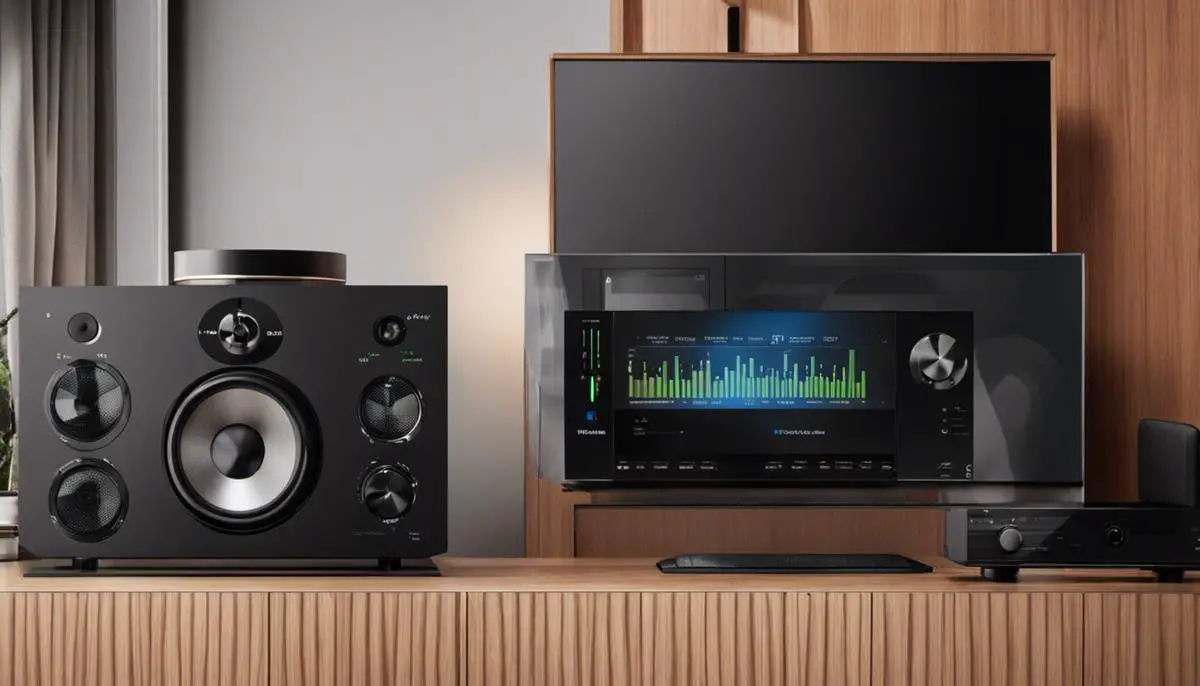
Choosing the Right Wireless Headphones for You
Delving Deeper into Wireless Headphone Transmitter and Receiver Technology
Wireless headphones function by establishing a connection or pairing with the intended device, such as a smartphone, tablet, or gaming console, provided they are Bluetooth-enabled. The key components involved in this mechanism are the transmitter and receiver. The transmitter resides in your device, emitting radio wave signals that get assimilated by the receiver in your headphones. Consequently, sound signals metamorphose into sound waves, enabling you to enjoy your music, podcasts, or videos.
However, it’s worth remembering that the reach and caliber of the transmitted signal can fluctuate in resonance with the technology employed. Bluetooth technology, the most widely used alternative today, typically covers a range up to 30 feet. Yet, some technologically superior versions can extend this range considerably.
Sound Quality in Wireless Headphones
Sound quality in a wireless headphone is primarily determined by the headphone design and the codec it uses to transmit digital signals. Popular codecs include SBC (Subband Coding), AAC (Advanced Audio Coding), and aptX. These codecs compress and decompress your music data, affecting the sound quality. Some codecs, like aptX and LDAC, offer high-quality audio over Bluetooth, comparable to wired headphones.
There are also features like Active Noise Cancellation (ANC) and sound equalization settings that contribute to the sound quality and can enhance your listening experience.
Comfort and Design
The design and comfort of your headphones are subjective yet crucial factors. Over-the-ear and on-ear headphones can provide excellent sound quality but may be uncomfortable or inconvenient for long use or intense exercise. In-ear headphones are more lightweight and portable but may compromise slightly on sound quality.
Materials used, weight distribution, and the tightness of the headphone grip all contribute to comfort. Additional features, such as a foldable design or carrying case, may be beneficial for portability and ease of storage.
Pricing and Your Budget
Wireless headphone prices can vary from budget-friendly options under $50 to high-end models costing several hundreds of dollars. Your budget should factor in the primary use for the headphones (general listening, fitness, professional use, gaming, etc.), required features, and desired sound quality.
A Quick Comparison of Top Brands
As for the top brands, Sony and Bose are known for their superior Active Noise Cancellation features, comfort, and sound quality, but they come with a heftier price tag. Companies like Jabra, Apple (with its AirPods series), and Beats provide a balanced profile of sound quality, features, and design. For more affordable options, brands like Anker and Taotronics are solid choices.
Remember, selecting the right wireless headphones is a personal decision based on various factors. Each brand and model holds its strengths and potential drawbacks. Understanding the basics of the transmitter and receiver technology, and considering your sound quality needs, comfort preferences, and budget will help guide your decision in choosing the right pair for your individual needs.
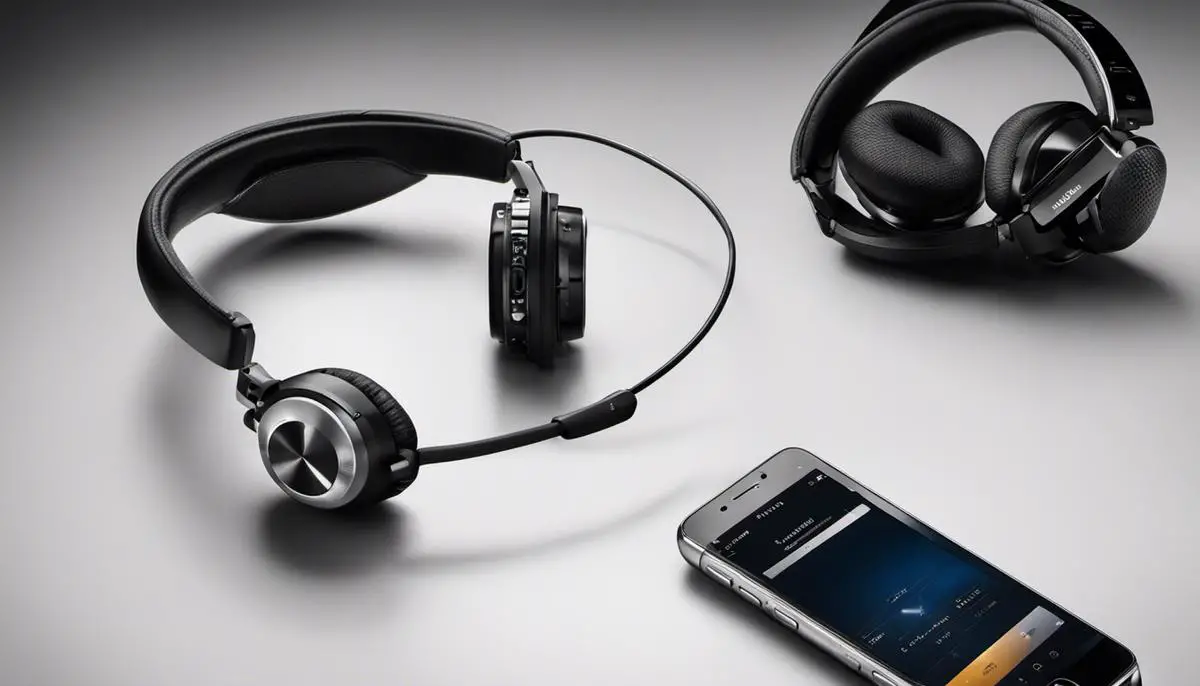
Having explored the intricacies of wireless headphones, their transmitters, receivers, and the technologies behind them, we are in a better position to understand the appeal they hold for the modern user. Their freedom, audio clarity, and technological advancements make them an attractive choice for various users.
While making the decision to purchase, a balance between technology, comfort, sound quality, and budget plays a critical role. Thus, understanding these factors demystifies the process of choosing the right pair of wireless headphones. Remember, the perfect pair awaits you; it all depends on understanding your specific audio requirements and aligning them with what’s best available on the market.

